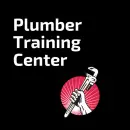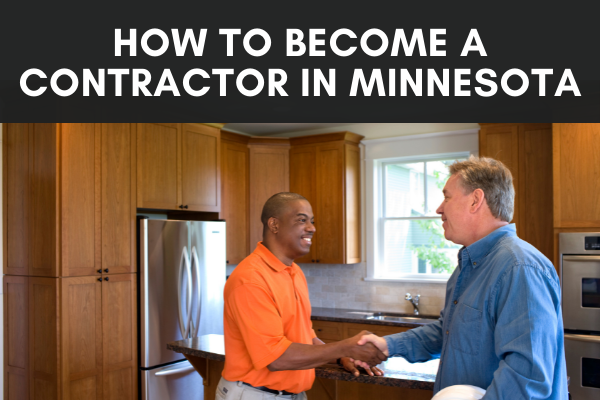Minnesotans have long been called some of the nicest people in the country, which makes working in the state that much more attractive. For those wondering how to become a contractor in Minnesota, this page will outline exactly what you need to do to make it happen.
If you plan to complete contract work on residential units or to perform more than one type of special skill contract work (outlined below), you are required to hold a Minnesota Contractor and/or Remodeler License. Licensees must first apply for and pass a state exam, followed by completing the license application and paying all fees.
Additional licenses are also available for roofers, electrical contractors, plumbing contractors, mechanical contractors, and more.
Do You Need a Contractor License in Minnesota?
The Minnesota Department of Labor and Industry issues Contractor and Remodeler Licenses to residential contractors. These MN contractor licenses are required for any individuals and businesses who contract with homeowners on 1- to 4-family residential structures.
Licensed contractors may offer work in multiple skill areas. Those providing services in two or more skill areas are also required to be licensed. Skill areas include excavation, masonry, carpentry, interior finishing, exterior finishing, drywall and plaster, roofing, and general installation specialties.
Separate licenses are also granted to electrical, plumbing, sign, satellite, and mechanical contractors. More information for these can be found here.
Minnesota Contractor Licenses
Minnesota offers two main types of contractor licenses: Residential Building Contractor (BC) Licenses and Residential Remodeler (CR) Licenses.
CR licenses allow you to perform work on existing residential structures, whereas the BC license allows you to do this plus perform new construction.
The licensing procedure and application are the same for both license types. The only difference is that they have distinct pre-licensure exams.
Minnesota also offers a Residential Roofer (RR) License, which allows you to complete roofing work, not including gutter, downspout, soffits, or fascia installation.
How to Get Your MN Contractor’s License
To get your CR, BC, or RR contractor license, you’ll need to take these steps:
- If applying as a business, properly register it with the state
- Select your Qualifying Party
- The Qualifying Party should pass the prelicensing exam
- Submit a license application
- Register Your Business
If you’re applying for a license as a business, you’ll first need to be properly registered with the state. This means you will have to file your business with the MN Secretary of State. When you submit your license application in step 4, you’ll need to include a copy of your certificate of incorporation or a screenshot of it from the official Secretary of State’s website.
Your business name will also have to be stated exactly as it is filed on your application, certificate of liability insurance, and any other official documents you submit.
For those applying for a license as a sole proprietor, you’ll become licensed as an individual and not as a business.
- Select Your Qualifying Party
All applicants must select a Qualifying Party (QP). The QP will be responsible for taking and passing the official exam, keeping up with Continuing Education requirements for licensure renewal, and overseeing the contractor work for the business.
There are no experience or educational requirements for QP examination. QPs do not have to be owners of the company nor do they have to be the person submitting the license application – although they may have to sign off on the application.
The QP for an individual proprietorship must be the sole proprietor or the managing employee. QPs for partnerships will be one of the partners or a managing employee.
LLC QPs should be chief managers or managing employees. Finally, corporation QPs should be the chief executive officer or managing employees.
QPs cannot be independent contractors hired by the business, nor can they be the QP for multiple businesses unless there is at least 25% common ownership between the companies.
- Take the Exam
Once you have selected someone or self-designated yourself as the QP, the next step is to apply for, pay for, and take the state exam. The application fee is $50.
BC applicants will need to take the qualifying builder exam. CR applicants, on the other hand, will need to take the qualifying remodeler exam. Roofers have a separate exam.
Exams are made up of 110 multiple-choice questions. QPs need a 70% or higher to pass.
The majority of questions (60%+) are about the MN Residential Building Code, while the rest are about general rules and statutes of residential construction.
Exams are open-book and candidates are given two reference books they can use during the exam: the MN State Residential Code 2020 edition and the DLI Reference Manual for Residential Building Contractor and Remodeler License Exam.
If you don’t pass your exam, you’ll need to wait one month before reapplying and paying the fee again to take a new exam.
- Submit Your License Application
Once you pass your exam, you’ll be sent instructions on how to apply for your license. You may apply online or via mail.
Applications list what information you must submit, including but not limited to:
- Proof of your business registration with the state
- Your Federal Tax ID number or Social Security number
- Information on all parties who own at least 10% of your business
- The Qualifying Person Designation Form
- Background Disclosure Forms for all primary employees, partners, stakeholders, etc.
- A Certificate of Liability Insurance
- A Certificate of Compliance Form MN Worker’s Compensation Law, if applicable
- The application fee, depending on your business’ gross annual receipts
- Gross receipts <$1 million: $440
- Gross receipts of $1-$5 million: $540
- Gross receipts >$5 million: $640
Once your application is processed and approved, you will receive your license.
Minnesota Contractor License Renewals
These Minnesota contractor licenses are renewed every two years. QPs are required to complete 14 hours of Continuing Education (CE) before renewal. One of these hours must be related to energy codes and/or energy conservation.
QPs can keep up with their CEs through their online account. More information on required courses and the renewal process can be found here.

